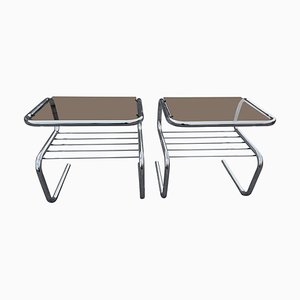
Bruno Mathsson was born in 1907 in Värnamo, Sweden. His father, Karl, was a fourth-generation master cabinetmaker, so Bruno was exposed early on to the possibilities of new wood technologies. A self-taught designer and architect, Mathsson was inspired by the functionalist movement, and, expanding on his family trade, spent much of the 1920s and 1930s studying the functional possibilities of wood.
Mathsson’s furniture designs experimented with curves and height, and were driven by ergonomics and function. He exhibited a collection of bentwood furniture at the 1937 World Exposition in Paris, launching his international reputation; his Eva Chair (then called Work Chair) was purchased for the public spaces of the soon-to-be-opened Museum of Modern Art in New York. In 1939, he exhibited at the New York World’s Fair, cementing his popularity in the U.S. In the 1950s, his attentions turned to architecture, and he often incorporated large glass pieces into his residential projects. In the 1960s, Mathsson again focused on furniture, and began working with tubular steel. Notably, he collaborated with Danish mathematician Piet Hein to create the Super Ellipse Table, which rested on span legs that made the tabletop appear to hover in space.

